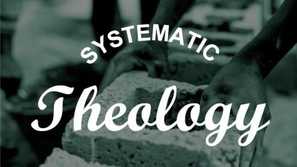
In the 13th Century when Aquinas wrote, it had become cool again to reason like Greek philosophers. 1,000 years earlier, the Platonic ideas about the Divine essence, logos, and demiurge had already shaped the language of 4th-century church creeds about Jesus’ divine nature and the Trinity. Now, the Greek categories were returning with the Renaissance to reconstruct the Christian faith. Aquinas embraced Aristotle and Plato in a historic act of unintentional syncretism. The systematic Greek logic behind his Summa Theologiae became the standard for structuring the Christian faith. The theological enterprise turned into a “sacred science” (in Aquinas’s words) with its “propositions” and “principles” similar to other philosophical sciences.
The long-term impact of Summa Theologiae on how theology is done was unintentional. Most theologians and historians frame Aquinas as an intellectual missionary. He was trying to express genuinely biblical faith in the language and concepts of contemporary thought leaders, just as the 4th and 5th century creeds were doing. In the most generous reading, Aquinas and the creeds are not examples of the Hellenization of the Gospel but of the evangelization of Hellenism (thank you Van Hoozer for this succinct framework!).
Unfortunately, the context of such contextual theology often gets forgotten in future forms that imitate it. Aquinas was no exception. Aquinas's theological science hopefully affected scientific philosophers in his day, but his Aristotelian assumptions likewise infected future Christian theology. Going forward, doctrine became synonymous with categorizing answers to topical theology questions (Yeah, I'm looking at you Dispensational and Reformed theologians ;) .
By the time Protestant reformers had their heyday in the 16th Century, the rules of the theological game had been established. The Christian faith did not find itself in a trail of divine action left through human history. It was more philosophically astute and well-ordered than that. Christian theologians were now expected to run past epistemological humility in grandiose efforts to restructure biblical content into answers for any doctrinal question (think Grudem’s Systematic Theology). Systematizing theologians of the Protestant tradition have long since employed a dangerous formula: Words from the Bible + culturally and linguistically determined logic = answers to every theological or ontological question. The diversity of biblical genres that embodied truth and the diachronic developments from Genesis to Revelation gave way to uniform answers delivered in synchronic slices that did not reflect a dominant form of delivering truth anywhere in Scripture.
Now what could be wrong with breaking up the Bible into properly categorized propositions? In short, everything. If your theology doesn't look like or act like the Bible itself, then it cannot represent its contents faithfully. It distorts not distillate it’s substance.
The rise of logically extrapolated systematic theologies changed the Christian faith. Catechisms and confessions proliferated as Protestants took up Aquinas's idea of the sacred science. Confessionalization (literally a historic period from the Peace of Augsburg in 1555 to the religiously motivated Thirty Years’ War begun in 1618) divided Christians radically. Ever-growing doctrinal statements separated Christians into a litany of logically at-odds denominations. What was arguably meant to preserve the Gospel from various syncretisms, in fact, corrupted the Gospel along the way. Violent wars were rationalized by distinctly worded “orthodox” confessions that defined God, the Church, and the Sacraments differently.
How did so many Christians get so far from Jesus’ announcement of love, justice, and mercy? Why didn't Protestants putting Bibles in every hand and home fix the problem? Simple. Church theologians made a hermeneutical mistake. They extracted static statements of truth in Scripture from the arduous story of God in those same Scriptures. What was meant to make sense of the story became disconnected from the story. The “principles” and “propositions” were loosed into language that no longer had its context to control the meaning.
A few confessions attempted to preserve the link between the doctrinal statements and the biblical stories that gave them meaning. The early Apostles Creed began with a core summary of God’s acts climaxing in Christ. The Heidelberg Confession connected the Gospel to the entire biblical narrative: “God began to reveal the gospel already in Paradise; later God proclaimed it by the holy patriarchs and prophets and foreshadowed it by the sacrifices and other ceremonies of the law; and finally God fulfilled it through his own beloved Son.” But, the proliferation of confessions in the 16th, 17th, and 18th Centuries favored abstract statements excised from Scripture and built into logical systems of thought. They gave philosophically organized answers to each culture's inquiries. The resulting confessions were rooted in contemporary cultural, political, and linguistic sandboxes that mutilated the form and function of Scripture.
Many confessions had a positive and pragmatic function within the church to train new pastors and teach new converts (e.g., the Heidelberg Confession), but they moved beyond the Bible to answer behind-the-scenes questions about God’s nature. The limited information the Bible preserved about God’s great acts in history were drowned in philosophically answered questions about ontological realities no human mind should pretend to comprehend. Doctrinal confessions became the boundary lines between believers with little sanctifying value. The living faith became a mere set of beliefs. Let me write that again because it’s the crux of the issue. Systematic theology turns the living faith into a mere set of beliefs. It tells each group what truths to believe, but not how they fit into God’s dynamic storyline depicted in Scripture.
The Danger of Orthodox Doctrine
The confessional wake of the Reformation transformed orthodoxy into a sort of Protestant inquisition. Public assent to the same theological opinions of those in power was mistaken for God’s examination of the heart. Church leaders built elaborate doctrinal beliefs to determine who was really on the team—by which sometimes they meant the church and other times it blurred into political allegiances. In one egregious exhibition of the “Protestant inquisition,” Magisterial Reformer Ulrich Zwingli decreed in 1526 that Anabaptists who practiced adult baptism instead of child baptism should all be drowned to death. That's crazy for someone who supposedly embraced the Way of Jesus.
To draw the doctrinal lines more easily, shorter summaries of systematically organized theology became en vogue. These “statements of faith” reduced the content of the Bible to oversimplified “is” statements. Although many statements may be well-intentioned, the dynamic story of God redeeming the world in Scripture got replaced by static summaries of theological things. These simple affirmations are found all throughout the confessions and now on “what we believe” pages on church websites. They are comprised of simple propositions like: Faith is a pre-ordained gift. Jesus is at the right hand of the Father. The bread is his body. The Bible is inerrant. If you say each one of these truths is true, then you share the faith. You have the right belief system—even if you may not be righteous in deed.
The culturally contingent nature of language makes such an orthodox enterprise, separated from the contexts that control meaning, unsatisfactory to the reflective student. Biblical criticism of the 18th, 19th, and 20th Centuries has shown how difficult this model of faith is to defend. Historical context, textual variants, and Bible translations in 2,000+ languages have verified how elusive an inerrant description of “what is” actually is. The Aristotelian logic that Thomas Aquinas and his systematic ancestors employ gets muddled. The logic breaks down with the imprecision of our language and understanding. For example, God is a person, a gender less person, but not a force, yet he is a force but not like an energy, unless you speak Greek where no generic word for personhood without gender exists. Wow, that’s complicated reasoning limited by language. But what should you believe about God if your language has no gender-neutral case like Greek and no general term for a personal being like Latin?
Orthodoxy vs. Orthopraxy
The lack of universality in language and in logic and their inability to sanctify us when we syncretistically tie tightly worded confessions to the faith has pushed some to swing back across the pendulum from orthodoxy (having the right opinion) to orthopraxy (doing the right thing). I get why. When doctrinal debates about the “Eternal Subordination of the Son” cause unChristlike behavior in a conversation about Christ, why not just throw the argument over words out the window? Shouldn’t the buck stop with whether or not you embody the humility, boldness, grace, love, and justice of Jesus, regardless of which noun you use to describe his current form and its duration? (If your conscience just cringed when you read that sentence, please repent ;)

But doing the right thing isn’t enough. Orthopraxy can’t order our lives from the inside out. Without a worldview shift, the orthoprax imperative to do good things erodes into a misguided map for behavioral modification. Doing God’s kind of good doesn’t come naturally. We can only “will it” for a while. If all we needed to know were the right things to do so we could impose God’s instructions on our ugly instincts, then the Bible could have just been a long string of commands. But it’s not.
Orthopraxy is meant to be the external fruit of a well-ordered worldview inside. When we are properly grafted into God’s story and rescued from the soliloquy of our individual lives, then our instincts can align with his instructions. A rearranged imagination (i.e., faith) makes his ways make sense. His orders become an exposition of the way to live life best rather than an imposition on our individual stories. But we need a story bigger than just “do the right things” to reinvent the way we think and feel about everything around us.
So where does that leave us? If orthodoxy goes too far answering irrelevant, constantly iterating, and unknowable “is” questions and orthopraxy is more unpragmatic than it appears at first, how should we define the faith to which we hold?
Orthoscripts: The Next Doctrinal Step Toward Biblical Faith
A proper standard for the faith must not logically go beyond or fall short of the form and function of the Bible itself. Orthodox confessions notoriously annihilate the form of Scripture. Orthopraxy gets stuck establishing a mere Christian ethic without the power to transform us from the inside out. We need a framework infused with the substance and feel of Scripture itself.
Think about how the Bible acts as a whole. The Bible does not reify any culture or time by logically arranging a set of someone’s answers about theological things. It aggregates a collage of actions, experiences, and explanations from both God and the people interested in Him. It employs numerous genres and expressions to bring to life the key actors and dominant themes. Summary statements about characters and concepts and God himself are always tied to the activity that defines the referential meaning of the words used to summarize. The form of our statements of faith should follow suit.
All the songs, statements, proverbs, and prophecies of Scripture are rooted in a storyline. Statements like “God is love” in 1st John only have meaning in relation to the historic actions they reference—Jesus saving a sinful world. The command to embrace monotheism in Deuteronomy 5 only carries weight from the recent Exodus out of Egypt where all the other proposed gods were powerless. Likewise, our professions of faith should be integrally connected to the very activity that anchors their meaning. Otherwise, simple abstract statements will be lifted from what gives them meaning and carried away by new cultural associations attached to terms the last generation (or the last 700 years of systematic theologians) baked into our belief system.
To both anchor the faith in the right historical movements and direct how we continue that movement, we must replace static doctrinal statements with OrthoScripts. All the “is” statements must give way to the action of God discerned in the drama of redemption. We do not need to know just where Jesus “is” but where he is headed. Character is revealed in conduct. The nature of things is expressed in their function. OrthoScripts do just that. They find their direction in Scripture and avoid modernistic reductions to mere propositions. Propositional truth is not dead, but every proposition must be kept in the very action that anchors its meaning.
Read below how a typical, orthodox doctrinal statement about Jesus (that falls short of the form and function of Scripture!) is transformed into a dynamic OrthoScript that reveals Jesus’ identity through his activity:
Orthodox “is” Statement: Jesus is the perfect image and eternal Son of God, the savior of the world. He is himself very God. He was born of a virgin, crucified and raised from the dead. He is now standing at the right hand of God reigning as Lord in heaven.
OrthoScript: Jesus challenges the religious status quo by including excluded sinners, providing forgiveness without a specific Temple or ritual required, and sacrificing himself for the sake of others. As the example of how humanity was meant to live, he prays, entrusts himself to the Father, follows the lead of the Spirit, and cares more about faithfulness than pleasure.
He invites all to follow him into a life of loving God and one another no matter what the cost. He obeys until death and has been rewarded with resurrection and dominion. He shows us God’s character in his action and teaching, and in so doing he embodies the hopes that Jewish prophets and scriptures proclaimed.
As the visionary and developer of God’s dream for this world, Jesus has no equal and inspires followers to incarnate the same humble service and subversive activity witnessed during his life in our broken world. The trajectories of his life can rebuild communities characterized by love, grace, justice, compassion, humility, gentleness, and all the right things this world was supposed to be. He has launched and is leading the restoration of all things.
We can read the above OrthoScript and actually imagine how to follow Jesus’ lead. That sets them apart from propositional orthodoxy. Orthodox statements don't elicit action. They don't promote faithfulness. They just define the content of a faith. That makes doctrinal statements impractical for any discipleship process. Think about it. It's hard to follow Jesus when he is just standing there, even if his nature is unique.
OrthoScripts Act Biblical and Breed Action
Our doctrinal statements should reflect the biblical concupiscence. The anthology of biblical books is neither only a set of truthful propositions nor a continuous narrative. They are law and narrative, statement and poetry. If we glorify one to the exclusion of the others, we do violence to the Bible itself. If OrthoScripts are to replace Orthodox “is” statements, then they must advance us toward the same type of combination of content we find in the Bible. I believe they can do just that.
OrthoScripts mix essence with action to ground linguistic expressions in the proper assumed context. They blend narrative with statements of nature. They make you feel who God has been and the trajectories of who he is being. They form thoughts for the mind but stir feelings in your heart. They act more biblical than static affirmations of what is right to believe. And for that, we must revise our reductionistic modern statements of faith.
And what should happen if we do? We shall find that OrthoScripts go beyond describing doctrine to believe and can provide an inspiring story to join. The absurd modern assumption that orthopraxy naturally flows out of orthodoxy has proven wanting. A simple list of orthodox ideas that you sign off on does not reframe your imagination. It doesn't challenge your values or define in concrete terms the story we find ourselves in. So it rarely reflects itself in the mirror of our own behavior.
OrthoScripts written well animate a way of seeing our role and significance in the world. They define what the key characters are doing and where the story is headed so we know how to join in. Since identity is shaped by who and what we experience and not principles we have wordsmithed, OrthoScripts have greater power to form us than “is” statements that only inform us. Humans cannot embody one-dimensional propositions in a three-dimensional world.
Orthodoxy in its simplest form is the “right opinion” on a theological matter. That simply will not do. It leaves too much of the Bible behind to call such a “faith” biblical. It does make for easy boundary lines among believers but does injustice to the nature of the Bible itself. Put simply, you can’t be both biblical and entirely systematic.
I have coined the term OrthoScripts to play on both the foundation of rightly interpreted Scripture (“Ortho” meaning “right”) and the form of a written script that captures a good story (the “Script”). I believe it best reflects the context and subtext of biblical content. Even the Psalms of lament or the sufferings of Job assume the storyline of God’s good fight against the forces of evil. Although Abram had a contentless faith compared to Paul, Abram’s life gave context to our understanding of what righteousness does, and therefore is. Likewise, Paul’s pastoring of churches in letter after letter must be read with his imagination of God’s surprising plot twist in Jesus Christ. OrthoScripts are designed to keep rightly interpreted Scripture in the context of a dynamic script that can direct our lives today.
Static “is” statements do not reflect the diachronic development throughout Scripture. The move from Deuteronomy’s “kill your enemy” to Jesus’ “love your enemy” reveals a trajectory not a static truth. Our faith must express where the key players are heading and how major themes are developing, or else we theologians are just picking out pauses in the storyline that please a particular generation. We need to move our attention to what a law was doing in Ancient Near Eastern culture rather than its obsolescent status in a subsequent dispensation. William Webb’s “Redemptive-Movement” hermeneutic is an excellent framework for finding the dynamic movement in Scripture that should populate our Orthoscripts and direct our lives in post-Biblical times. This framework is grounded but not stuck in the ground.
Therefore, I am calling upon representatives of every tradition and creed to revise those doctrinal statements that no one uses to direct their lives. The “is” statements have done a good job determining who's in and who's out but have a poor track record for promoting both faith and obedience. The “is” statements are an essential ingredient to any theology, but they cannot stand alone. Any abbreviated “is” statement must be lodged within the storyline and structural diversity of Scripture. It is time to make our faith look and act more biblical and less like an Aristotelian rebirth perfected in the post-Enlightenment era. It is time to join Thomas Aquinas in his conclusion at the end of his life that all the theological syllogisms and philosophical science don’t amount to more than “a pile of straw.”
Let's create OrthoScripts that inspire and imaginate. Let's bring the activity of Scripture and sin, Jesus and redemption, God and the church back to life. Let's experience the truth rather than settle for argumentative expressions whose meaning is more rooted in a temporary cultural-linguistic construct than a long history of divine movement.
To begin, update your confessions by replacing as many state-of-being verbs as you can with active voice verbs. Make sure you can feel and see something when you read the words rather than just gaze at apparent synonyms like “infallible” and “inerrant.” Don't be afraid to mix poetry with propositions. If the reader can't envision through your script how the character or theme has acted throughout the storyline of Scripture, then you haven't written an OrthoScript. If you can't feel where God is headed, you haven't respected the form and function of Scripture.
OrthoScripts should give us the context we need to understand who we are in God’s world. Reality is ruled by the stories we tell ourselves. So let's start telling ourselves the right stories—the right scripts found in Scripture that incite our imagination and guide our improvisation into the future of what God is doing in the world.
You can read the first comprehensive OrthoScript at my post: The Story that Defines Us - A Narrative Creed for the Church, from the Bible, and relevant to human experience







 RSS Feed
RSS Feed
